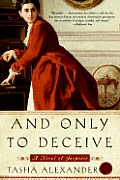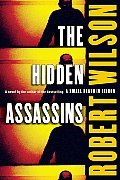BOOK REVIEW: The Glass Books of the Dream Eaters by Gordon Dahlquist
 Celeste Temple, a willful young woman from the West Indies, receives a terse note from her fiancée ending their engagement without any explanation. Roger Bascombe, a rising figure at the Foreign Ministry, has been cruel in his rejection and after mourning the engagement for a day, Miss Temple’s natural determination rising to the fore. Resolving to receive more information, Miss Temple follows Bascombe to Harschmort Manor where she finds herself an unwilling participant in a bizarre ritual involving masked guests, lewd behaviour and strange equipment.
Celeste Temple, a willful young woman from the West Indies, receives a terse note from her fiancée ending their engagement without any explanation. Roger Bascombe, a rising figure at the Foreign Ministry, has been cruel in his rejection and after mourning the engagement for a day, Miss Temple’s natural determination rising to the fore. Resolving to receive more information, Miss Temple follows Bascombe to Harschmort Manor where she finds herself an unwilling participant in a bizarre ritual involving masked guests, lewd behaviour and strange equipment.
When Miss Temple manages to escape from the Manor, she meets Cardinal Chang and later Dr. Svenson. Together they discover that the bizarre ritual Miss Temple observed involves a process of capturing experiences and trapping them in blue glass which can then be fully experienced through all sense by anyone viewing the image. Not only does this mysterious glass capture images and seduce the users, it can also be used to subdue and control others or to kill people. With the Cabal that controls the Process determined to see them dead, Miss Temple, the Doctor and the Cardinal band together to stay alive and uncover the Cabal’s secrets, and prevent them succeeding with their evil machinations.
The Glass Books of the Dream Eaters is a massive book and not only in its page count. The novel is overblown in the manner of the best Victorian gothic novels, both in the scope of the conspiracy, the gloom of its setting and the number of players. The three protagonists and the Cabal leaders are all larger-than-life (essentially stereotypes), yet are fully drawn and readers will quickly come to respect each for how they push their personal boundaries and develop through the novel. Edgar Allen Poe explored “the terror of the soul” in his gothic novels, most notably in Fall of the House of Usher, and Dahlquist does the same here as his protagonists face their deepest desires in the seductive offerings of the Cabal.
Each time readers are convinced that Miss Temple, the Doctor or the Cardinal are finished, a twist happens and they manage a death-defying escape. While readers may be unable to completely suspend belief – for really the number of escapes is exorbitant – the over-the-top nature of The Glass Books of the Dream Eaters perfectly mirrors its predecessors.
Readers who are seeking a quick or straightforward novel should take a pass on Gordon Dahlquist’s debut novel; however, lovers of period, genre-bending novels full of florid language will find The Glass Books of the Dream Eaters a delight which captures the imagination as completely as one of the Cabal’s books.
ISBN10: 0385340354
ISBN13: 9780385340359
Hardcover
768 Pages
Publisher: Bantam
Publication Date: August 1, 2006
Book Website (US): www.randomhouse.com/bantamdell/glassbooks
Book Website (UK): www.glassbooks.co.uk
































































